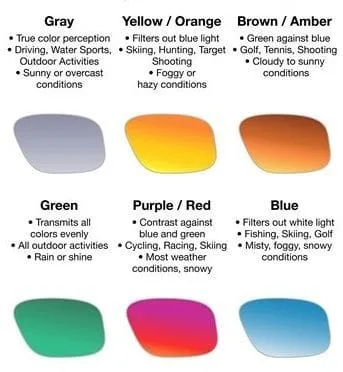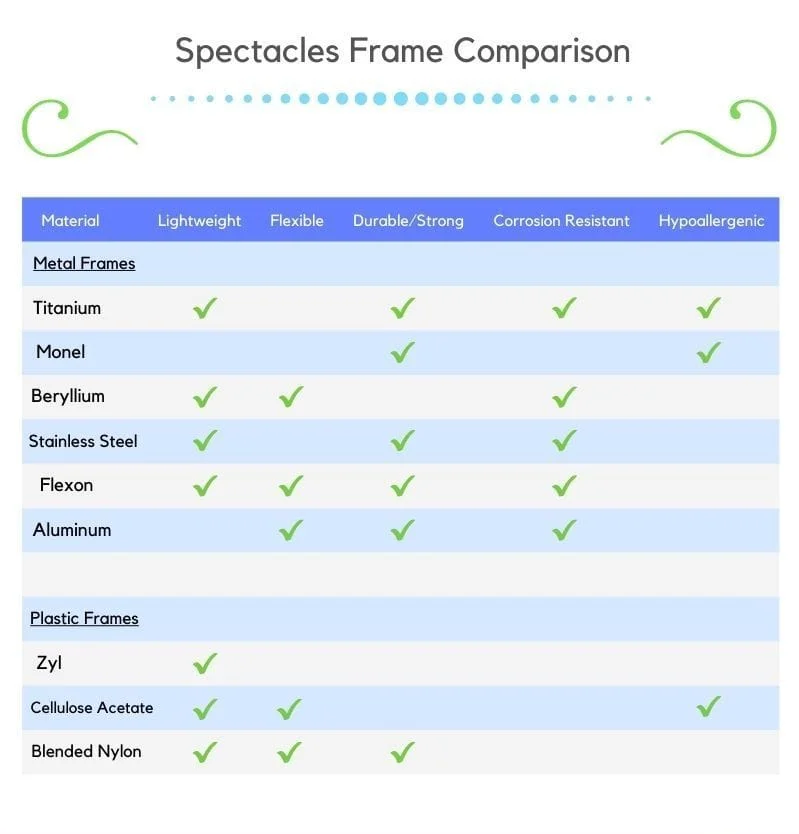TYPE OF EYEGLASSES.
There are two main types of eyeglasses.
1. Single-vision glasses have an all-purpose lens designed to help you see either close up or far away. They can be set to any focus, including near or intermediate vision.
2. Multifocal glasses correct both near and distance vision — all in the same lens. One portion is focused for distance vision, while the other portion is used for up close activities such as reading. Multifocal lenses come in several forms.
- Bifocal glasses have a dividing line and have a correction on the bottom half for reading and a different correction on the top half for seeing at a distance.
- Trifocal glasses have two dividing lines and have three different lens corrections — distance vision in the top, intermediate vision in the middle and near vision in the bottom — in one pair of eyeglasses.
- Progressive glasses are similar to trifocals, but they have a smooth transition instead of visible dividing lines between distance and near focal areas. They have seamless change in power from the top to the bottom of the lens, helping you see clearly at all distances with just one pair of glasses. The prescription changes little by little across the lens surface, providing a gentle transition. They can be more effective in correcting intermediate vision than bi- or tri-focal.
- Computer glasses are similar to progressive lenses, but with a correction specifically designed for focusing on computer screens which are usually positioned about 20 to 30 inches away from the face. These glasses help avoid eye strain and allow office workers to easily switch their focus between conference room whiteboards, printed pages and computer screens.
Lens Materials
Eyeglass lenses used to be made only of glass, but today most lenses are plastic.
Plastic lenses are lighter, more flexible and safer than glass lenses because they are less likely to shatter. They also have inherent UV light-blocking ability. They are suitable for single vision, low or medium strength prescriptions
Polycarbonate lenses are made from special type of plastic that is more impact-resistant than standard plastic lenses. These are recommended for active kids and people who play sports.
Trivex is a newer plastic material that has the same impact resistance as polycarbonate, but it allows more transmission of light than polycarbonate.
High Index lenses are made from thinner, lightweight plastic material and have a thin profile and can reduce the "coke bottle" appearance that often comes with thick-lens glasses. These are recommended for medium to strong prescriptions.
Aspheric lenses are lenses designed to have flatter peripheral curvatures than a regular spherical lens. This reduces the amount a lens may bulge out of an eyeglass frame, reducing magnification of the eyes, which improves cosmetic appearance.
Lens Coatings
Protective coatings for eyeglasses are available to help you keep your eyes healthy.
Anti-reflective coatings reduce glare. Coated lenses also allow more light to pass through. These coatings are especially helpful for people bothered by the glare of headlights and other lights while driving at night.
An ultraviolet (UV) coating helps to protect your eyes from the sun's harmful radiation.
Photochromic lenses automatically adjust based on light exposure, with a darker tint in sunlight and a lighter tint indoors also offer UV protection. People who prefer one set of eyeglasses for both inside and outdoors may benefit from these lenses. They are a convenient option for light sensitive people.
Lens Sunglasses Tints
Tints for sunglasses. Tints filter light in different ways, and some tints do a better job at blocking light than others. Some tints actually enhance colors, while others distort them. Tints have the ability to enhance vision in certain situations. Below is a simple guide for picking sunglass tints.
Gray: Gray is a popular neutral tint that allows the eyes to perceive colors in their purest form. Gray tints reduce brightness and glare. Choose gray for driving and outdoor sports such as golf, running, or cycling.
Yellow/Orange: Yellow and orange tints increase contrast in hazy, foggy, or low-light conditions. Choose yellow shades for snow activities and indoor ball sports. Yellow shades can also be helpful at nighttime as they increase contrast.
Green: Green tints filter some blue light and reduce glare, while offering high contrast and visual sharpness. Shades of green also tend to reduce eyestrain in bright light. Choose green for precision sports such as tennis, baseball, and golf.
Amber/Brown: Amber and brown tints reduce glare and block blue light, brightening vision on cloudy days and increasing contrast and visual acuity, especially against green and blue backgrounds such as grass and sky. Choose amber and brown tints for fishing, baseball, golf, hunting, cycling, and water sports.
Rose/Red: Rosy tints increase contrast by blocking blue light. They have a reputation of being soothing to the eyes and more comfortable than others for longer wear-times. They also help with visibility while driving, and seem to be a favorite among computer users as they reduce glare and eyestrain.
Polarized lenses have a special chemical applied to them to filter light. The chemical’s molecules are lined up specifically to block some of the light from passing through the lens, and this is designed to reduce glare from surfaces. Usually light scatters because it bounces at varying angles off an object’s uneven surface. This is what we know as glare. Glare distorts the true color of objects and makes them harder to distinguish. Polarized sunglasses eliminate this glare and can be useful for certain sports and driving and on surfaces such as water, snow, and glass, helping to see more clearly and avoid potential hazards.
Frame Material
Eyeglass frames are made from many types of plastic and metal. Some frames combine materials—for example, a frame with plastic surrounding the lenses and temple pieces made from titanium. Each type has its own unique strengths. Different materials will be right for different people and situations. Here is a basic guide that explains about the most common types of frames and what they have to offer.
Metal Eyeglass Frames
In general, frames made from metal, titanium or alloys (a mixture of metals) stand up well to wear and tear. Metal frames more durable than plastic, and are are clean and timeless.
- Titanium frames are very strong, lightweight and corrosion-resistant, hypoallergenic and come in a variety of colors. These can be a good choice for older children or for anyone who is rough on their frames.
- Monel is a mixture of metals. They are quite flexible and corrosion-resistant. Because they have a mix of metals, they can cause allergic reactions in some people with sensitive skin, although most monel frames have a coating to protect the skin.
- Beryllium is very lightweight, strong, corrosion-resistant and come in many colors. It is also flexible, making it easy to adjust them. These frames can be a good choice for people who spend a lot of time in or around salt water.
- Stainless steel frames are lightweight and strong and are corrosion-resistant, but not as light as titanium.
- Flexon, as the name suggests, is a very flexible material. Flexon is an alloy of titanium, which comes back into shape even after it is twisted or bent. These frames are lightweight, corrosion-resistant and hypoallergenic. These frames are great for active kids.
- Aluminum is sometimes used in high-end frames. It is corrosion-resistant, flexible and strong.
Plastic Eyeglass Frames
Plastic frames are the most popular choice, because they usually are less expensive, are lightweight and come in a variety of colors and styles. Plastic frames are good for infants and small children, who are hard on frames. Soft Plastic frames are also more bendy and less likely to hurt the child in a fall.
- Zyl (zylonite, or cellulose acetate) is inexpensive and lightweight, and comes in many colors. Zyl frames are easy to adjust.
- Cellulose acetate propionate is a lightweight, nylon-based plastic that is hypoallergenic. It can be a little softer than other plastic frames.
- Blended nylon frames are strong and lightweight, and are a popular choice for sports or safety frames. Nylon frames are often found in wraparound styles, because they are easily molded.
- Optyl is a brand of epoxy resin. When heated, it becomes very malleable, making it easy to mold the frame to the shape of your face.








